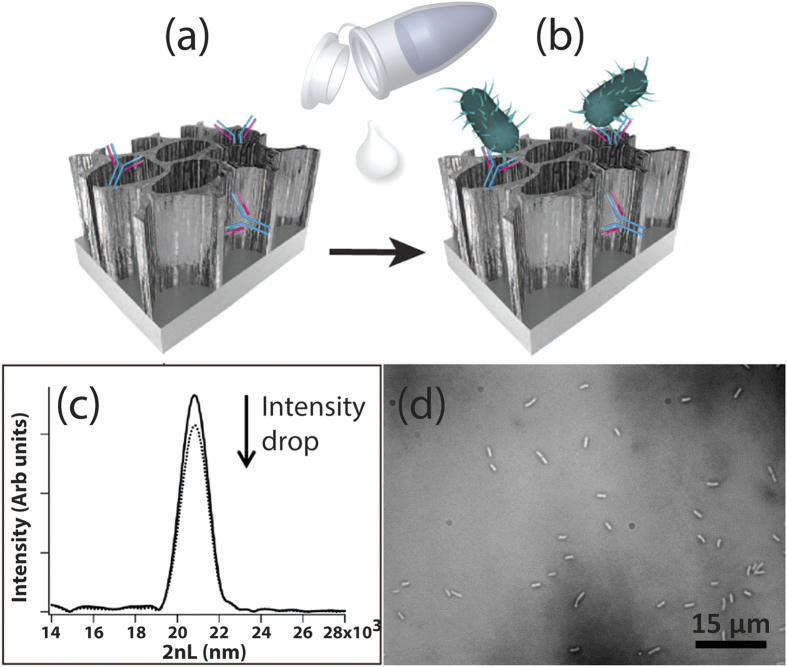Figure 4. The biosensing concept.
(a) Specific capture probes (antibodies) were immobilized onto the porous surface to provide the active component of the biosensor. (b) Next, the biosensor was exposed to the target bacteria in order to directly capture the bacteria cells onto the antibody-modified PSiO2 surface. (c) A drop in the intensity of the thin-film optical interference spectrum of the biosensor results from bacteria capture. (d) Microscopy tools (light microscope and HRSEM) and real-time PCR methods were used to confirm the presence of bacteria on the biosensor surface.

